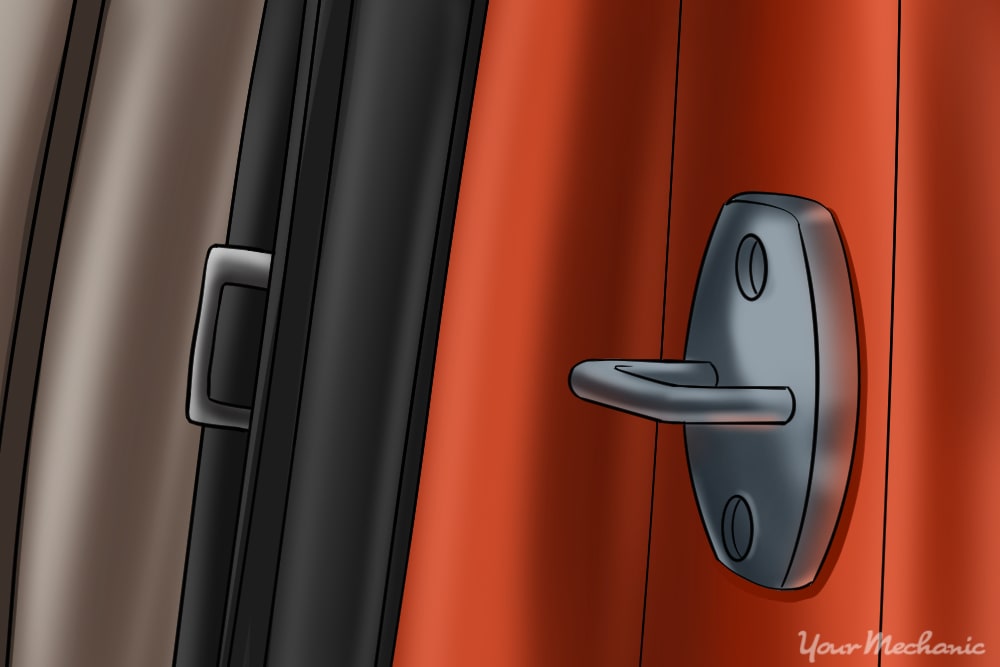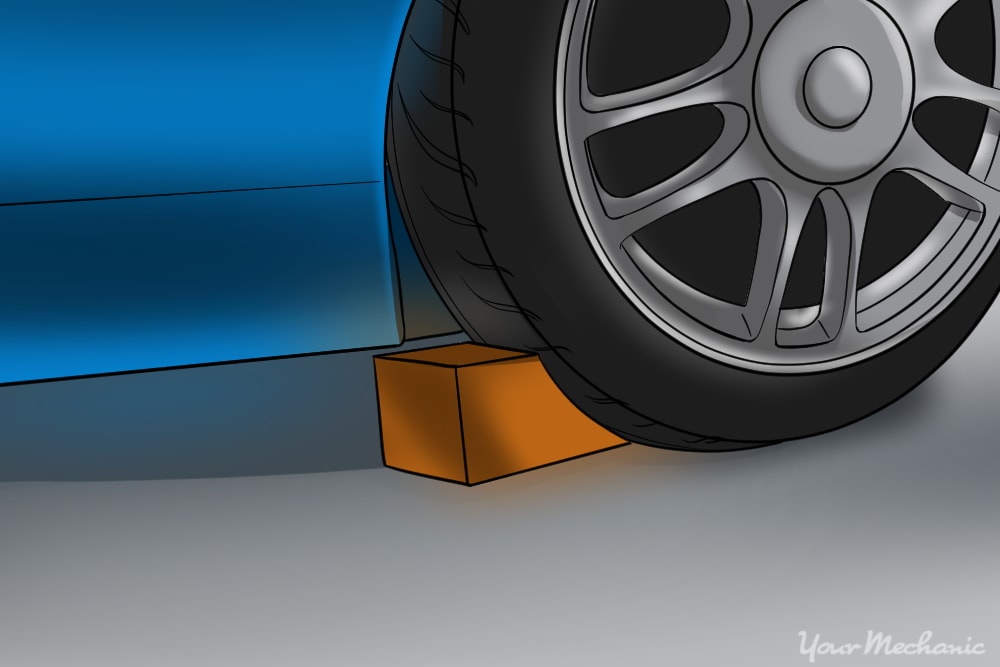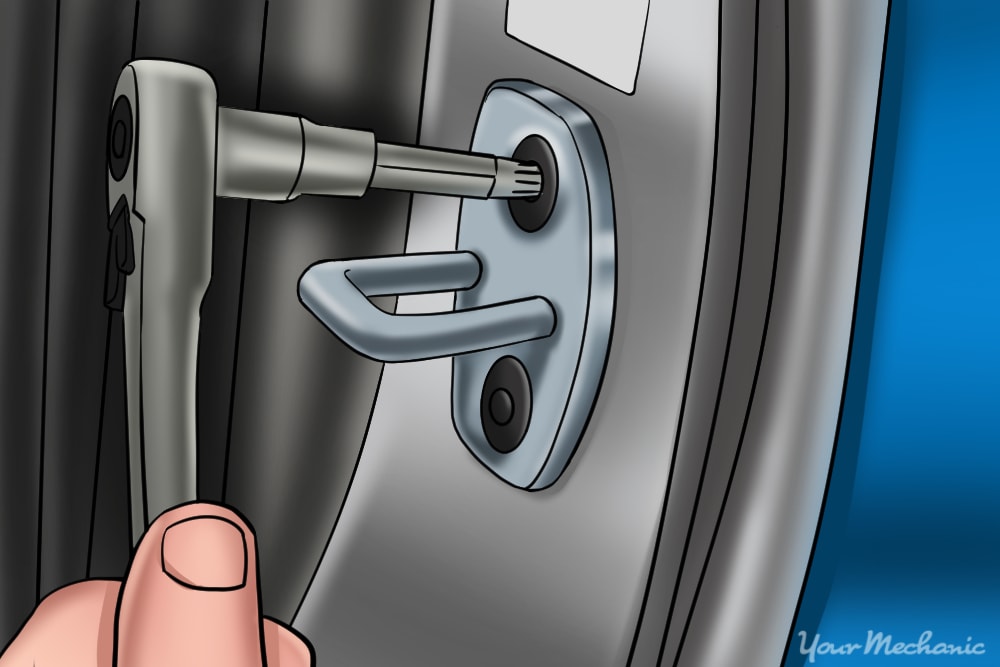

Door strikers are hooks or bolts that latch up the doors on a vehicle. The striker is designed to create a tight fit between the door and the seal on the cab. The striker plate is made of hardened metal that prevents wear when the door is open and shut many times each day. In addition, the striker plate also helps to hold up the vehicle's door as the hinge pins wear.
In some vehicles, a door latch mounted at the end of a car door catches on the door striker when the door is closed for a tight fit. On other vehicles, particularly some older vehicles, the door striker plate is mounted on the surface of the door frame and catches on the door striker. When the outside door handle or inside door handle of the door is operated, then door latch releases from the striker plate and allows the door to freely open.
If the door striker plate is damaged or worn, the door may not hold tightly or it may even get jammed onto the striker plate. Most door striker plates can be adjusted or rotated as it wears out.
Part 1 of 5: Check the condition of the door striker plate
Step 1: Locate the striker plate. Locate the door with the damaged, stuck, or broken door striker plate.
Step 2: Check the striker plate for damage. Visually look at the door striker plate for any damage.
Gently lift up the door handle to see if there is any problem with the mechanism inside the door when the door latch is released from the striker plate. If the door seems to have a dragging feel or if the handle is difficult to operate, then it may be a sign to adjust the striker plate or replace it.
- Note: Child safety locks on vehicles will only keep the rear doors from opening when operating the inside handle. The doors will still open when the outside door handle is pulled.
Part 2 of 5: Prepare to replace the door striker plate
Having all of the necessary tools and materials prior to starting the work will allow you to get the job done more efficiently.
Materials Needed
- Allen wrench set SAE / Metric
- Compound filler
- Cross tip screwdriver, number 3
- Grinder
- Level
- Putty knife
- Sandpaper 1000 grit
- Torques bit set
- Touch up paint
- Wheel chocks
Step 1: Park your vehicle. Park your vehicle on a flat, hard surface. Engage the parking brake to keep the rear tires from moving.
Step 2: Secure the rear tires. Place wheel chocks on the ground around the rear tires.
Part 3 of 5: Remove and install the door striker plate
Step 1: Unbolt the damaged door striker plate. Use a number 3 cross-tip screwdriver, torques bit set, or Allen wrench set to unbolt the door striker plate.
Step 2: Remove the door striker plate. Remove the door striker plate by sliding it off. If the plate is stuck, you can pry it off, but be careful not to damage the area that secures the door striker plate.
Step 3: Clean the door striker plate mounting surface. Use 1000 grit sandpaper to sand down any sharp bits in the door striker plate mounting surface.
Step 4: Install the new door striker plate. Install the new door striker plate onto the cab. Tighten the mounting bolts on the door striker plate.
- Note: If the door striker plate is adjustable, you will need to perform adjustments on the plate to ensure a tight seal between the door and the cab.
Part 4 of 5: Replace the door striker plate and fix any cosmetic damage
With long-term use, the door striker plate tends to get pushed back and forth and pushed into the door’s or cab’s surface. When this happens, the surface surrounding the plate begins to crack or break. You can fix this surface damage while you replace the door striker plate with a new one.
Step 1: Unbolt the damaged door striker plate. Use a number 3 cross-tip screwdriver, torques bit set, or Allen wrench set to remove the bolts on the damaged door striker plate.
Step 2: Remove the door striker plate. Remove the door striker plate by sliding it off. If the plate is stuck, you can pry it off, but be careful not to damage the area that secures the door striker plate.
Step 3: Clean up the door striker plate mounting surface. Use 1000 grit sandpaper to file down any sharp bits around the mounting surface or damaged areas.
Step 4: Fill in the cracks. Take some compound filler that matches the cab material. Use aluminum compound for aluminum cabs and fiberglass compound for fiberglass cabs.
Apply the compound to the area with a putty knife and scrape off the excess. Let the compound dry for the amount of time mentioned in the instructions on the container.
Step 5: Clean up the area. Use a grinder to clean up the area. Do not grind too much or you will have to reapply the compound again.
Use sand paper with 1000 grit to smooth down any sharp nips in the surface.
Step 6: Check whether the surface is level. Use a level and verify the patch has been fitted to the cab correctly. Check the horizontal and vertical measures for proper accuracy.
Step 7: Install the new door striker plate onto the cab .Tighten the mounting bolts on the door striker plate.
Part 5 of 5: Test the door striker plate
Step 1: Verify that the door shuts tightly. Verify that the door shuts and seals tight between the seal and the cab.
Step 2: Adjust the plate. If the door is loose, loosen the door striker plate, move it a little, and tighten it back up. Check again to see if the door shuts tightly.
- Note: When adjusting the door striker plate, you may have to adjust it several times to ensure a good seal on the door.
If your car door has a drag or does not open even after replacing the door striker plate, you may need to conduct further inspections of the door striker plate assembly and the door striker to check for any door latch component failure. If the problem persists, seek the help of a certified technician, such as one from YourMechanic to inspect the door and determine the cause of the problem.






